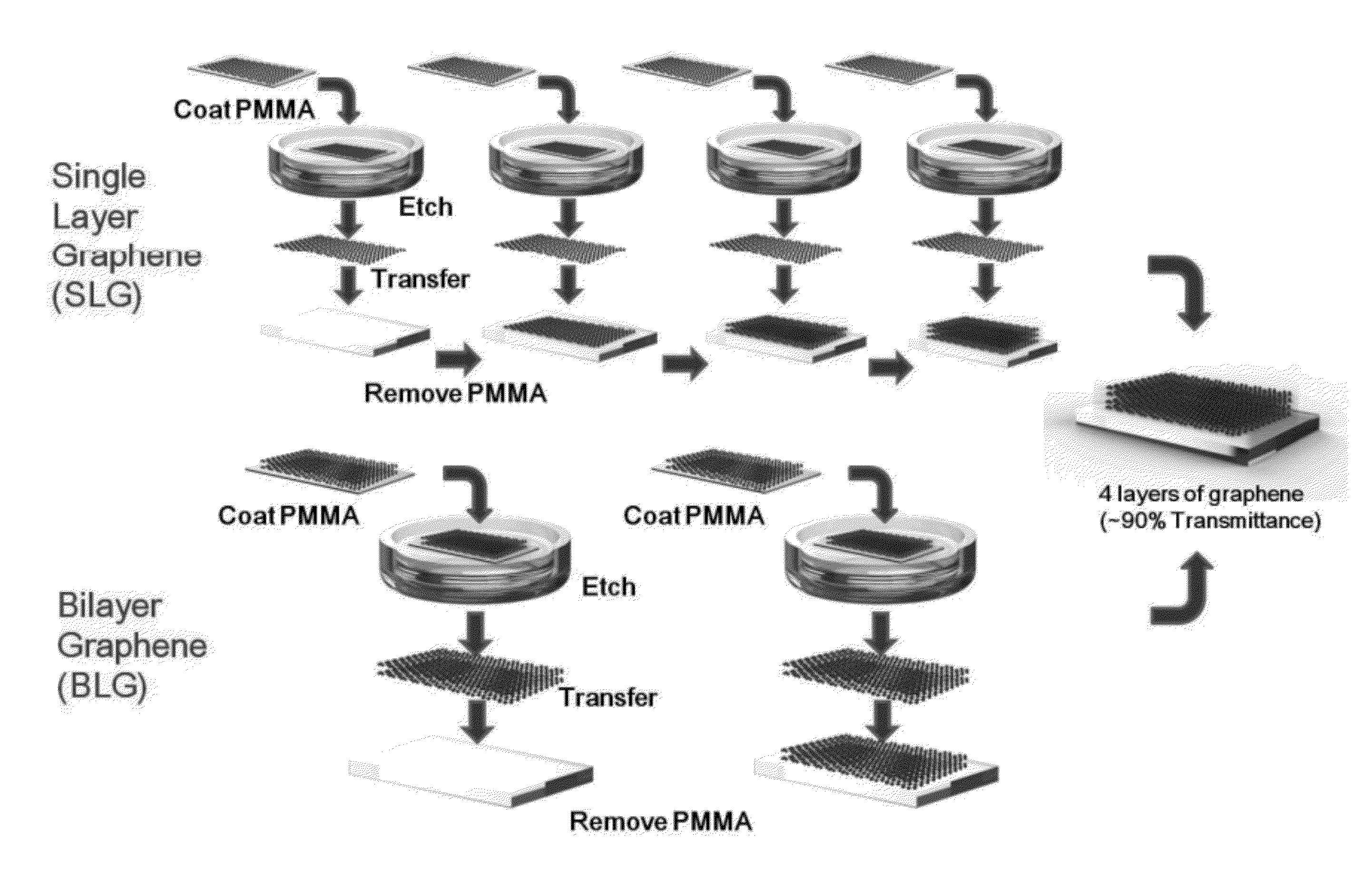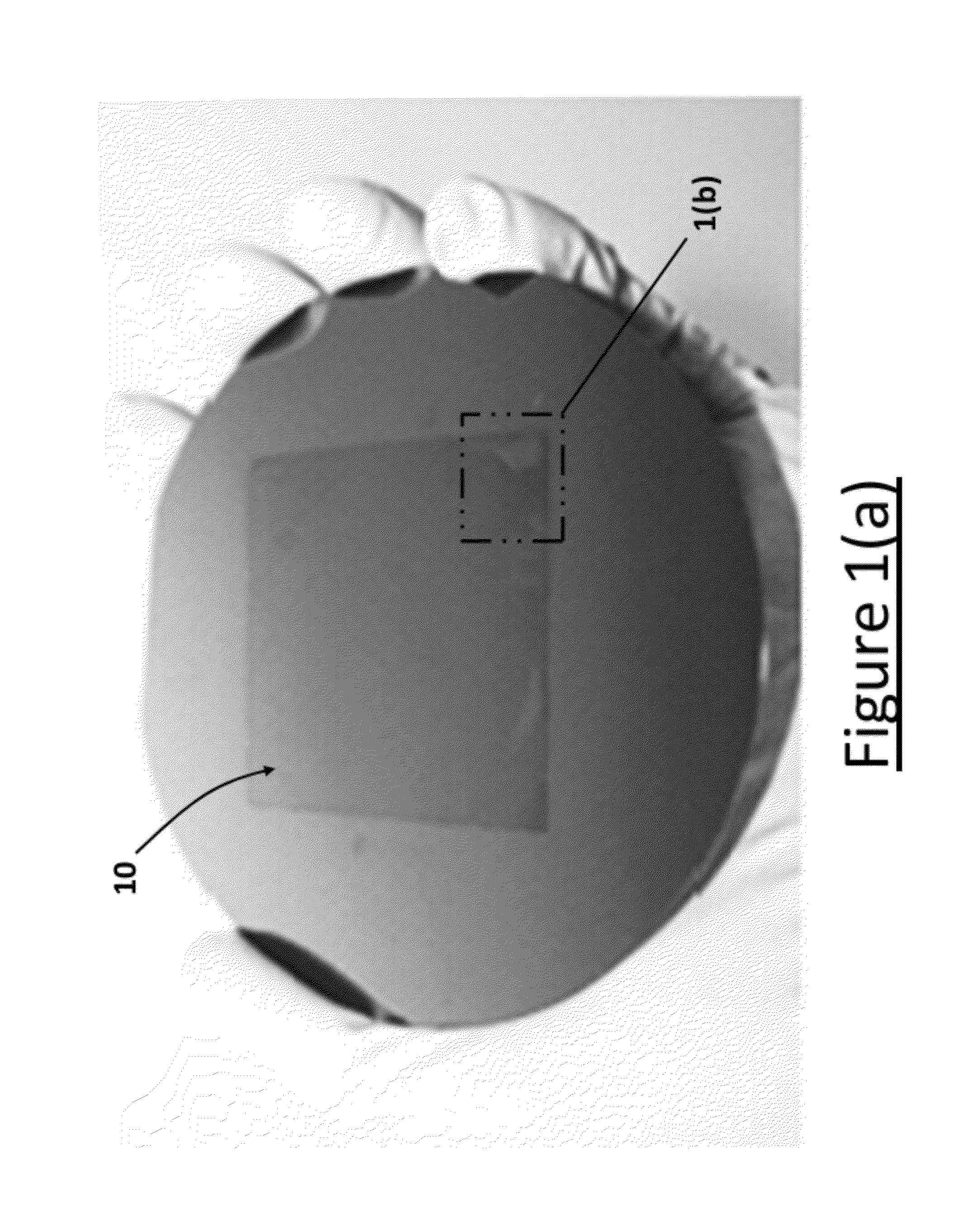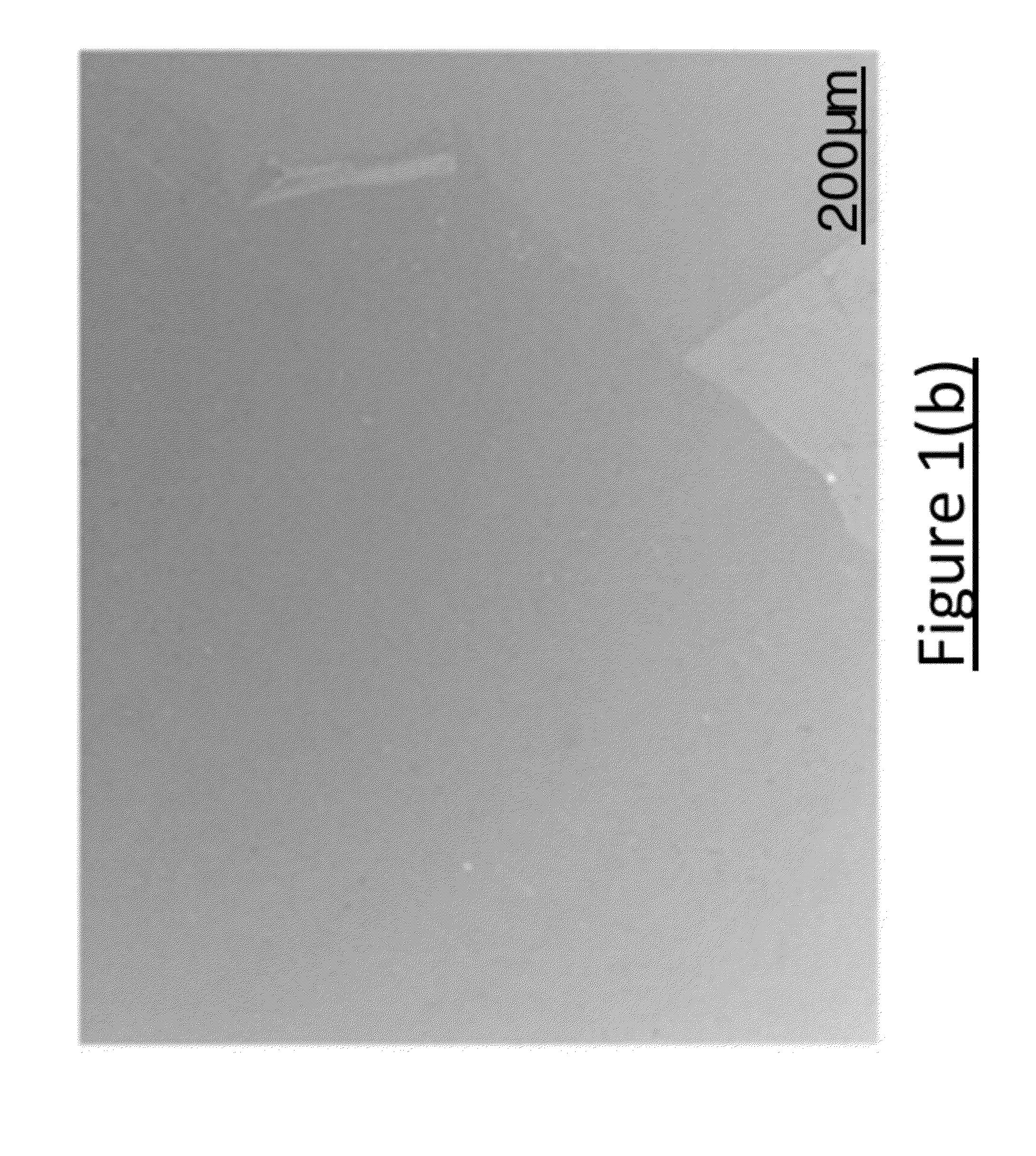Uniform multilayer graphene by chemical vapor deposition
- Summary
- Abstract
- Description
- Claims
- Application Information
AI Technical Summary
Benefits of technology
Problems solved by technology
Method used
Image
Examples
Embodiment Construction
[0045]Described below are exemplary embodiments of a method of producing uniform multilayer graphene by chemical vapor deposition (CVD), as well as exemplary graphene structures and products that may be constructed using the method. Uniform multilayer graphene may be directly synthesized or grown on a CVD substrate in a CVD reaction chamber. As such, the multiple graphene layers may be deposited in a single CVD process or process cycle without the need to produce multiple separate monolayers and then stack the monolayers on top of one another. Uniform bilayer graphene (BLG) can be produced using one embodiment of the method. Multilayer graphene produced as described herein may be further characterized by interlayer uniformity due to the nature of CVD processes and the manner in which the individual carbon atoms self-organize in such a process. Certain embodiments of the method may be expanded to include fabrication of flexible transparent conductors from CVD-produced multilayer grap...
PUM
| Property | Measurement | Unit |
|---|---|---|
| Temperature | aaaaa | aaaaa |
| Temperature | aaaaa | aaaaa |
| Pressure | aaaaa | aaaaa |
Abstract
Description
Claims
Application Information
 Login to View More
Login to View More - R&D
- Intellectual Property
- Life Sciences
- Materials
- Tech Scout
- Unparalleled Data Quality
- Higher Quality Content
- 60% Fewer Hallucinations
Browse by: Latest US Patents, China's latest patents, Technical Efficacy Thesaurus, Application Domain, Technology Topic, Popular Technical Reports.
© 2025 PatSnap. All rights reserved.Legal|Privacy policy|Modern Slavery Act Transparency Statement|Sitemap|About US| Contact US: help@patsnap.com



